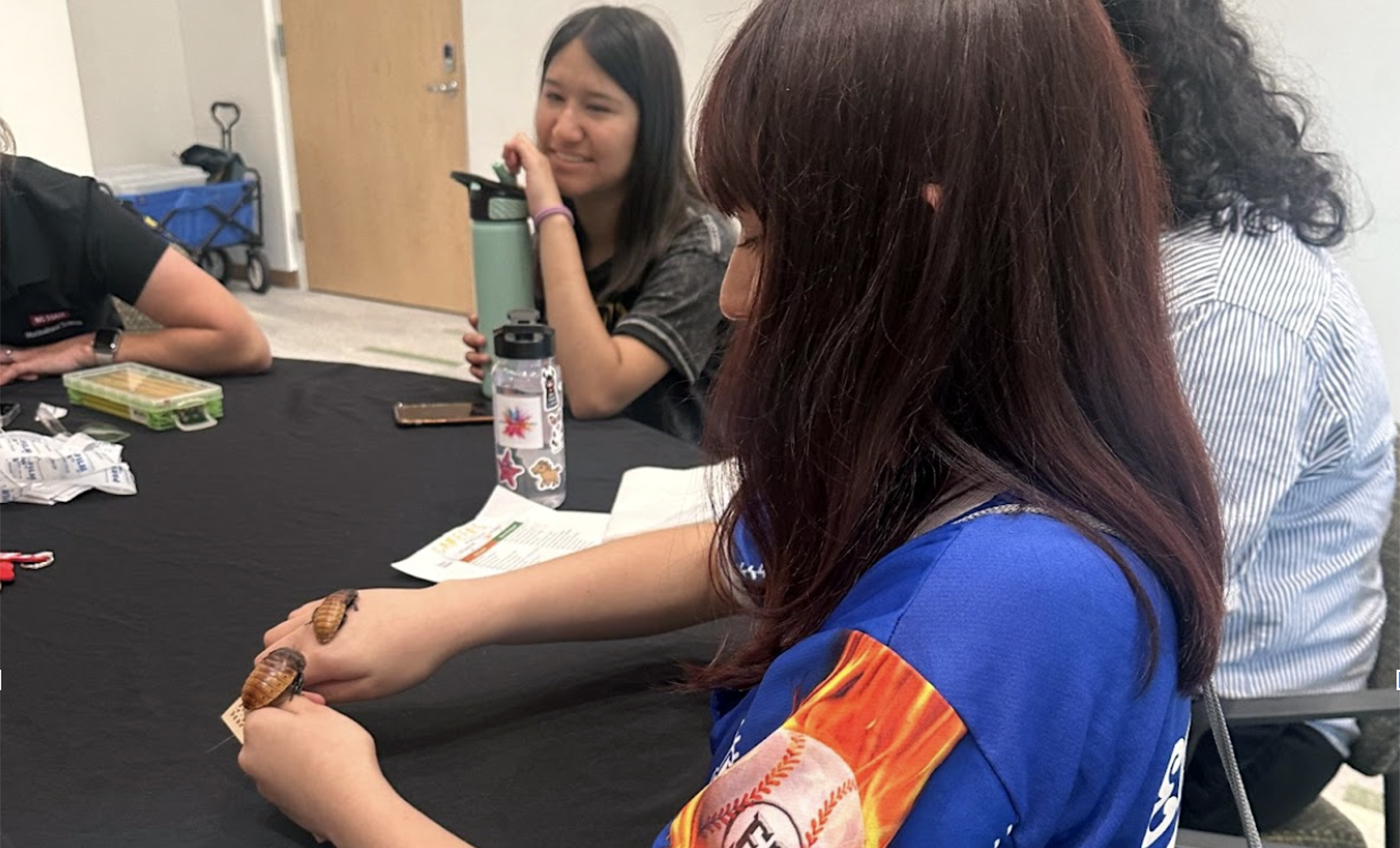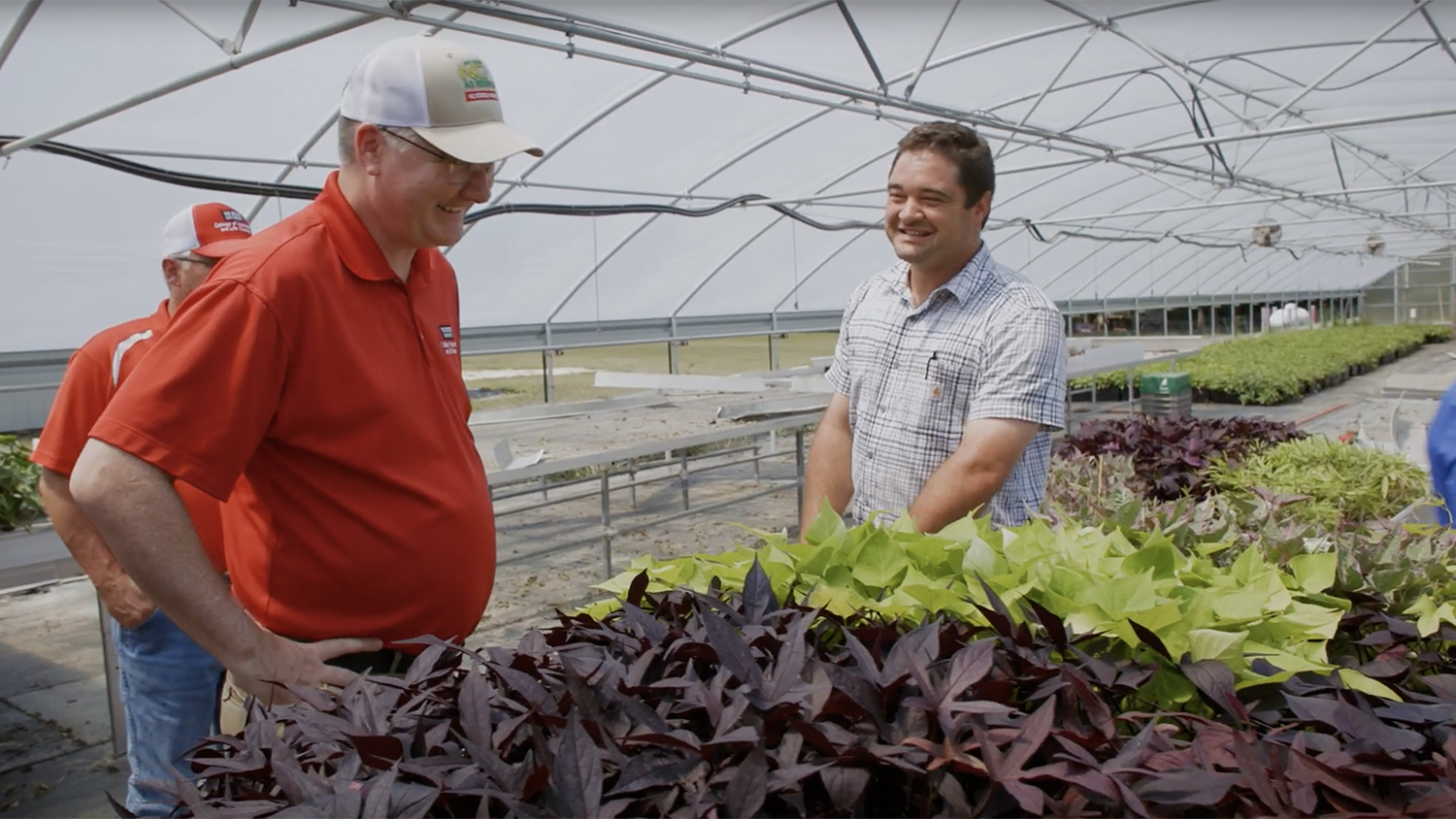Pinehurst No. 2 goes native
When the U.S. Open golf tournament comes to the Pinehurst No. 2 in 2014, the players will find a course that has been renovated and even more challenging to play. That renovation now includes activities to introduce more native plant species, manage turf and encroaching vegetation and control invasive weeds on the course. These sustainability efforts are being supported by crop scientists and turf specialists from N.C. State University’s College of Agriculture and Life Sciences, including Department of Crop Science Ph.D. student Kevin Stallings. He presented his research in his poster entry at the 2013 Graduate Student Research Symposium.
His entry, “A Native Plant Assessment of Pinehurst No. 2 Golf Course,” chronicles his contributions in restoring the course to a design that better reflects the course’s natural ecological surroundings in the Sandhills region of North Carolina. The design included reduction of Bermuda grass acreage by about 30 percent, an increase in native habitat and a reduction in water inputs. His poster depicts current N.C. State projects directed at cataloging and managing the native Sandhills vegetation at the historic course and the ecological challenges of managing emerging vegetation.
“In this project, we are characterizing native vegetation, desirable adapted species and invasive weeds on the Pinehurst No. 2 site as the course transitions from the recent renovation,” says Stallings, who is from Wendell and received his CALS bachelor’s degree in biological sciences in 2008 and his master’s in environmental studies from UNC-Wilmington in 2010.
“Using 2012 research data, we are now beginning to explore appropriate weed control measures using integrated pest management strategies and species-specific herbicides. This detailed ecological analysis can serve as a model for how golf course superintendents can successfully approach sustainability.”
The ecological challenges with such restoration efforts arise because golf course managers are trained specifically to work in turfgrass settings and may not be fully aware of all the vegetation that may grow in a region once a course is modified to reflect the local ecosystem, Stallings says. “As new emerging vegetation is identified, managers will need to adapt their strategies to account for a variety of new species.”
Thus he has prepared identification sheets and aids to be an ongoing resource for golf course managers. “Each plant species, in the native areas, is documented and provided in a booklet that may be used for general management decisions,” he says. “Information related to the habitat, identification characteristics, utilization, native locations and bloom characteristic are included in addition to images for quick identification. A handheld version will aid herbicide spray teams in the field.”
Because golf courses are consistently under pressure to be efficient businesses that use resources efficiently, he also offers innovative management solutions. “A common goal among sustainable golf courses is the use of less water, a reduction in time required to manage a course and the use of less money,” Stallings explains. “In the new native areas of the golf course, we will work with managers, as ecologists, to reduce the resources and promote an attractive layout for the golf course and provide tools for management.”
His study was inspired by the move towards sustainability, which is creating new challenges for golf course management, he says.
“Merging these managed turfgrass systems with the natural environment requires knowledge of native ecology of the surrounding site and how to control invasive and unwanted vegetation. All native species are not acceptable, even in out-of-play areas. And many locations have continual pressures from invasive species that pose ecological threats.
“For Pinehurst No. 2, encroaching vegetation has never been systematically cataloged, and little is known about appropriate herbicides to use to selectively control unwanted weed species. In this project, we will characterize invasive weeds on the Pinehurst No. 2 site, and begin to explore appropriate integrated pest management for unwanted weedy species.”
Significantly, his project has yielded the information resource for golf course managers and others. “In addition to generating important information that is useful for management of Pinehurst No. 2, the project offers a unique opportunity to educate the public about golf course sustainability and the role of that ecologists can play,” Stallings says.
“We have produced a brochure with images of the plant species on the Pinehurst site, and these photos are accompanied by botanical and physiological descriptions. The brochure also includes information on the appropriate management for selective control of undesirable weed species.”
This brochure will be handed out to each of the 100,000+ people attending the 2014 Open.
There is a clearly defined outreach and education component to his study: Employees at Pinehurst Golf Course will be supplied with an onsite field guide to aid in weed management decisions and herbicide usage. The project was also presented at the 2013 National Outdoor Recreation Conference to communicate how sustainable golf course design may promote sustainable communities and prosperity in other areas of the country. And, ultimately, the study will quantify the savings related to water, labor and fuel that are influenced by the new design at Pinehurst No. 2 and provide a method for managing the weed Aristida stricta before the U.S. Open in 2014.
Moreover, he says, “the U.S. Golf Association has a demonstrated interest in golf course sustainability and education, and public awareness of golf course compatibility with the environment. Our detailed ecological analysis can serve as a model for how to approach sustainability in the golf course industry.”
In assisting the success of his project, Stallings credits Dr. Danesha Seth Carley, CALS crop science assistant professor and coordinator of CALS sustainability programs, and Dr. Rob Richardson, crop science assistant professor and weed scientist, “who provided the means and opportunity to work with Pinehurst No. 2 golf course during my time at NCSU”; Bob Farren, director of golf course management at Pinehurst Resort and Country Club; Kevin Robinson, CALS graduate in turf management and superintendent at Pinehurst No. 2; John Jeffreys, also a CALS turf management alumnus and Pinehurst assistant superintendent; and especially the CALS Office of Sustainability Programs and Bayer Environmental Science, which provided funding for the project.
Stallings also notes that “our project is tied very closely to the building and the continued work at the NCSU Lonnie Poole Golf Course. We continue to work closely to uphold the vision of a sustainable golf course.”
It will be near the time of the 2014 U.S. Open that Stallings expects to receive his Ph.D. degree in crop science, as well as a certificate of public policy.
His experience in the graduate program at NCSU “has provided insight into the value of being a public servant and educating the public on the importance of environmental protection and management,” he says. “In the future, I desire to be a liaison between the public, policymakers and environmental scientists to aid in the development of adaptive management environmental programs.”
As for the near future, he offers one more bit of information that will be of interest to those teeing off at Pinehurst No. 2: “The difficulty of the course will increase as a result of the redesign.”
– Terri Leith
- Categories:


